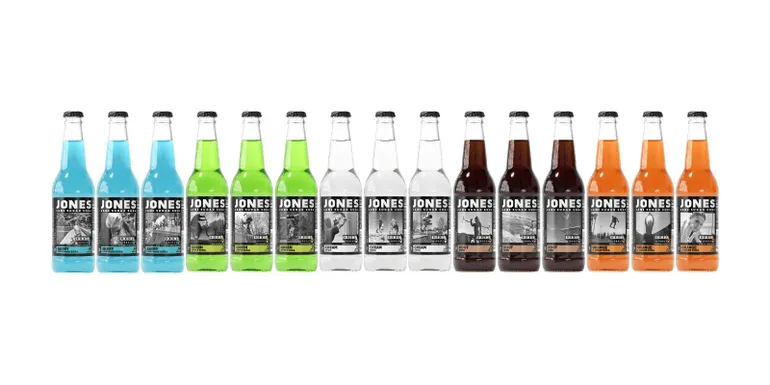For manufacturers bored with consumers seeing their merchandise as static choices on retailer cabinets, augmented actuality has turn out to be a tempting advertising and marketing device. Analysis means that these phone-based visible experiences will help drive gross sales, significantly for smaller manufacturers with a extra slender viewers in thoughts.
Packaging can immediate the interactions with as small of a design change as a QR code and an explanatory immediate.
“There’s numerous innovation taking place on this house,” stated Evan Rose, founder and president of Rose Digital, a software program improvement agency specializing in AR experiences.
Regardless of these modifications, packaging supplies and intentions nonetheless affect the forms of engagements that AR encourages, or how huge a task the packaging performs within the expertise itself.
Making seamless extra seamless
Augmented actuality, which first migrated into the promoting house within the early 2000s, sits someplace between real-life and digital actuality.
“Typically the best way I describe AR is with an immersion spectrum,” Rose stated. Whereas digital actuality creates complete environments that make the true world disappear, AR typically interacts with somebody’s environment or no less than lets the digital and genuine be seen concurrently.
The mixture of “actual” and “synthetic” is a vital a part of the AR marketing campaign launched by Seattle-based craft soda maker Jones Soda Co.
The beverage firm prides itself on distinctive packaging. Because the early 2000s, images on the entrance of every glass bottle have been submitted by prospects, stated Curt Thompson, the corporate’s director of brand name advertising and marketing. The corporate’s Reel Labels program prompts consumers to scan a QR code and focus their telephone digicam on the entrance of the drink. A brief video — additionally one submitted by a buyer — performs atop the place the normal static photograph sits.
An earlier model of the Jones Soda AR expertise required prospects to scan a QR code and obtain an unbiased app that would host the video. Since then, expertise has gotten higher and extra acquainted to prospects. Not solely are QR sensors now embedded in smartphone cameras, however the pandemic pushed customers to get aware of the monochromatic squares.
“For my part, the one good factor to return out of the pandemic was the accelerated adoption of QR codes,” Thompson stated. Clients now count on {that a} scanned code will inform them extra details about the product, he added.
Software program that shows AR experiences has additionally shifted from requiring separate apps to choices that combine into telephone net browsers. Any interplay that avoids downloading one other app only for the visuals is one that may seemingly entice extra customers, stated Pete Oberdorfer, founder and president of Tactic, an immersive digital expertise software program studio.
Model motivations
Extra apparent and seamless AR launch methods imply patrons may pull up the experiences whereas in-store procuring. What they see is determined by the method {that a} model desires to take for encouraging gross sales. If the intent is to offer extra context in regards to the product itself, then an organization might supply a visible dive into the place elements come from or the model’s historical past.

Almond Breeze used augmented actuality to make its carton packaging extra interactive.
Courtesy of Tactic
Tactic’s AR marketing campaign for Jack Daniels, for instance, let customers watch because the black-and-white label appeared to flap open right into a 3D pop-up e book. Navigating between a cartoon model of Lynchburg, Tennessee, the 1904 World’s Truthful and different essential instances and locations within the distillery’s historical past confirmed off extra in regards to the model than the label itself may clarify.
AR campaigns may additionally assist consumers choose between flavors or varieties. Rose Digital designed a “digital concierge” for Moët Hennessy, a division of luxurious items conglomerate LVMH, that walked customers via questions on their eating or ambiance preferences. Primarily based on solutions {that a} shopper chosen on their display, a digital model consultant gave a particular wine or liquor suggestion. These sorts of interactive experiences with an envoy are significantly good for making consumers really feel spoken to, Rose stated.
A model may additionally flip to AR to spice up shopper loyalty. If that is the objective, the expertise — resembling an interactive sport — ought to come earlier than asking for buyer emails or providing coupons, Oberdorfer stated. In any other case, the experiential marketing campaign turns into conventional advertising and marketing.
That method is how Chobani opted to launch its first AR marketing campaign within the fall of 2023. QR codes on multipacks of Halloween-themed yogurt cups prompted consumers to tug up an AR “trick or deal with.” Cartoon doorways gave the impression to be hovering on flat areas inside no matter surroundings the person occurred to be in. After the person “knocked,” the doorways revealed themed cartoons or treats like digital coloring books, bodily keychains and different merch.
“The choice to go together with a browser-based answer was key, making certain that anybody with a smartphone might simply entry our AR expertise immediately from the packaging with out the trouble of downloading an app,” stated David Isaac, vice chairman of manufacturing at Chobani, by way of electronic mail.
Bodily concerns and future potential
Two basic routes have emerged for manufacturers to pursue AR with packaging: AR that requires customers to maintain their digicam targeted on the packaging for the visuals to work, or variations that function in a special discipline of model that the digicam sees.
An AR expertise revolving across the packaging itself requires a real-world begin. “We all the time inform the consumer: Give us precise prototypes or packaging of the true factor,” Oberdorfer stated.
Labels, supplies and different product design points decide how effectively a package deal hosts an AR expertise. The digicam solely sees in black and white, so it wants sufficient distinction and distinct shapes to acknowledge the package deal and pull up the precise visuals software program engineers tied to the package deal, Oberdorfer stated.
Reflective surfaces or crinkly, pliable supplies — suppose a metallic bag containing potato chips — won’t give the digicam the dependable particulars it wants. Visuals might not keep constantly aligned or may lower out and in, just like experiencing a foul web connection. Reliability may even change over the course of some hours. A refrigerated beer can might need a frosty, interfering sheen {that a} room temperature aluminum package deal won’t.
If these packaging attributes are too laborious for a model to satisfy, off-product visuals could be a greater route. One other consideration is that if a product doesn’t have a big sufficient flat floor then an AR visible might look too small and unnatural.
Additionally, if the packaging isn’t meant to be an “unboxing expertise,” there could be no have to delay somebody’s engagement with the wrapping. Some merchandise, like electronics or sneakers, are packaged in a manner that’s meant to construct anticipation for the customer. This use case may very well be a greater match to ask for a bit extra of the consumer’s time than, say, a easy immediate on packaging.
Wanting forward, Chobani and Jones Soda are eager about launching extra AR campaigns. What the manufacturers might supply may change because the expertise continues to evolve. Rose identified that mediating expertise might ultimately develop to extra repeatedly embody glasses or headgear as a substitute of simply telephones, if these merchandise turn out to be extra generally used. And if firms are eager about AR however are slower to vary, they’ll discover their manner in, too.
Some prospects have had the identical labels for 75 years, Oberdorfer stated, so “we’ve got to make these experiences work with these manufacturers and with these merchandise.”











